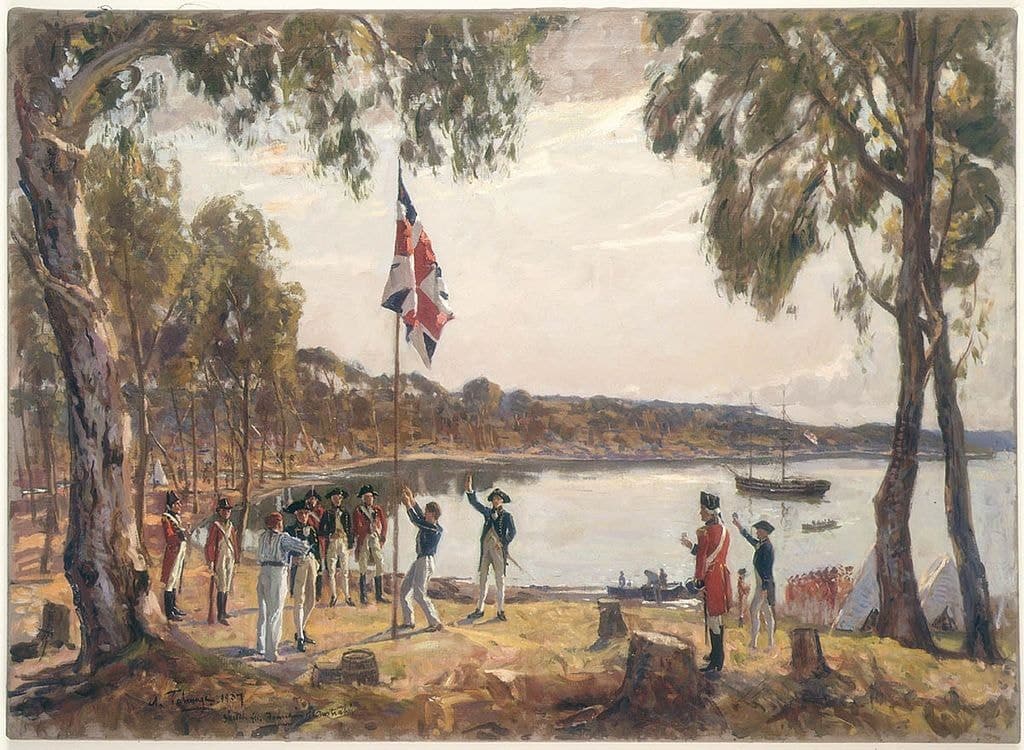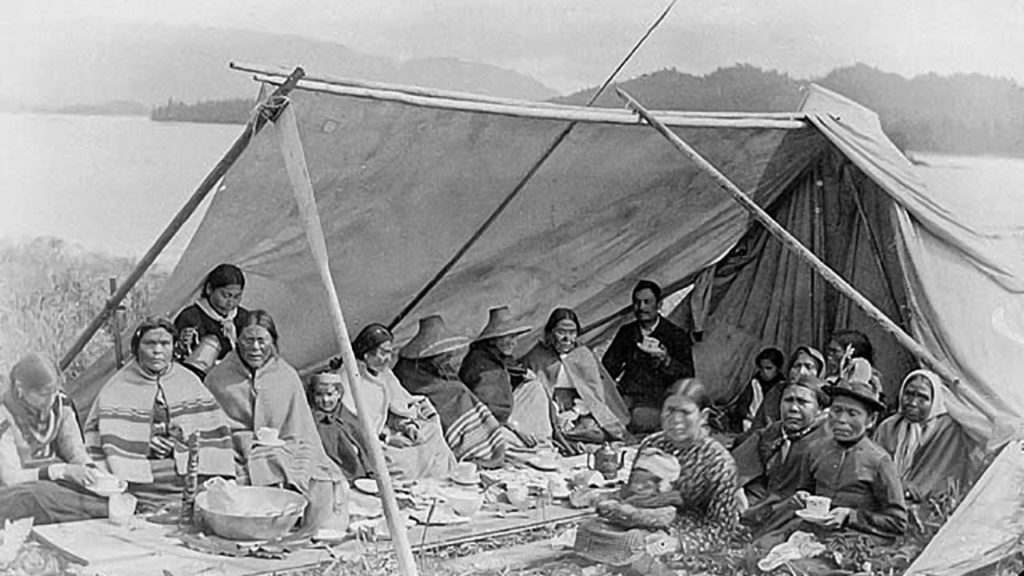First Nation Peoples lived on their land peacefully and sustainability for tens of thousands of years. But this once disease-free, culturally-rich and clean nation was disrupted and almost destroyed by the British settlers when they invaded with the First Fleet in 1788. The devastating impacts of colonisation were so great that they are still affecting the First Peoples to the present day.
Contact and colonisation had a detrimental impact on the Aboriginal Peoples society because it created many significant ongoing health issues and meant the loss of land, language and culture. Aboriginal Peoples’ health was greatly affected by colonisation due to the introduction of disease which decimated much of the population.
The environment suffered considerably under the introduction of European species and ignorant agricultural techniques of the British, which then lead to dietary colonisation of the Aboriginal Peoples. Furthermore, when their access to sacred sites was lost, their connection to Country, culture and identity, along with lifestyle and language, was compromised, creating a deep impact on their spirituality and society.

First Nation Peoples lived on their land peacefully and sustainability for tens of thousands of years. But this once disease-free, culturally rich and clean nation was disrupted and almost destroyed by the British settlers when they invaded with the First Fleet in 1788.
The devastating impacts of colonisation were so great that they are still affecting the First Peoples to the present day. Contact and colonisation had a detrimental impact on the Aboriginal Peoples society because it created many significant ongoing health issues and meant the loss of land, language and culture.
Aboriginal Peoples health was greatly affected by colonisation due to the introduction of disease which decimated much of the population. The environment suffered considerably under the introduction of European species and ignorant agricultural techniques of the British, which then lead to dietary colonisation of the Aboriginal Peoples.
Furthermore, when their access to sacred sites was lost, their connection to Country, culture and identity, along with lifestyle and language, was compromised, creating a deep impact on their spirituality and society.
Aboriginal society was detrimentally impacted by contact and colonisation because the introduction of diseases caused a significant decline in their health and population. Prior to the arrival of the British, Aboriginal Peoples were untouched by disease, and therefore, they had no genetic immunity or resistance to diseases such as smallpox, syphilis and influenza.
Although it is unclear whether the viruses were introduced by accident or by means of warfare, the diseases spread across Aboriginal nations. This resulted in a dramatic decrease in the population. The location impacted the most by the introduction of disease was the Sydney population of First Nation Peoples. A smallpox epidemic broke out among the clans after contact, decimating an estimated 80% of the population.
The white settlers were not harmed because of immunisation against smallpox that British infants were given called variolation. After smallpox devastated the population, measles, influenza, tuberculosis and sexually transmitted diseases followed, all having a significant effect on the well being and population of Aboriginal clans. Consequently, the introduction of disease deeply affected the First Nation Peoples because they had no resistance or knowledge of treatment for contagious, viral diseases.

The environment was critically impacted when the British arrived because of the introduction of invasive species, which damaged the Aboriginal Peoples agricultural land. The First Nation Peoples were incredibly intelligent and resourceful with their land. They only took what was necessary and lived a sustainable life through their complex agricultural system.
They cared for the land because it was their responsibility as Aboriginal Peoples. The British had never seen such land and ignorantly believed they could farm it as well as the First Peoples could. Once the free settlers arrived, they bought land that was never rightfully theirs and brought their animals with them.
Rabbits and foxes wiped out many of the native flora and fauna and breed too quickly to be stopped, as they had no natural predators in this new land. Thus, these introduced species thrived and the native populations were almost destroyed. Further to this, cows, sheep and horses compacted the earth with their hooves, hardening the ground so native grasses, grains or the Aboriginal Peoples’ crops were unable to grow.
Furthermore, because the sheep’s teeth’s have the ability to eat plants to the root, the murnong (yam daisy) crop, which Aboriginal People heavily relied on as one of their primary food sources, was destroyed.
Therefore, because their traditional food source had been compromised, the Aboriginal Peoples had no choice but to rely on the colonies’ food, which was incredibly different from their diet, as it was high in carbohydrates and sugars, and had severe impacts on their health.
First Nation Peoples loss of culture and identity as a result of contact and colonisation had a harmful impact on their society as culture was integral to their complex kinship system. Once Australia was incorrectly labelled as ‘terra nullius,’ the British government began to sell the land of the Sydney regions to free settlers and convicts who had served their sentences.
This forced Aboriginal Peoples to move to other areas of their clan boundaries or remove themselves entirely from their Country. Although leaving their responsibility as a custodian of their birth Country was a violation of their lore, colonisation left them no choice. Leaving their sacred sites, where specific cultural practises were exercised, created a fractured belief system.
Some sacred sites had entirely different languages that could only be spoken on the specific land, and when that site was not available to the First Nation Peoples, these languages were lost.
Therefore, colonisation and British occupation of sacred sites greatly affected the Aboriginal Peoples culture and spirituality, because these sites connected First Nation Peoples to their land, ancestors and each other, and played an important role in their intricate system of belief.
Therefore, the Indigenous Peoples were extensively affected by the colonisation of their land. When disease was introduced by the British, a large amount of First Nation Peoples died, critically impacted their population and health. Then, once their land became occupied by British farms, they had no choice but to rely on the British diet, which again, extensively affected their health and wellbeing.
Additionally, because culture was so present in the First Peoples everyday lives, the loss of it created a considerable impact on their society. Although the trauma and struggles of Aboriginal Peoples might never truly be reconciled, we should be focused on the rebuilding and education of their culture, language and connection to the land for future generations to learn and ensure the past’s mistakes are never repeated.
First Nation Peoples lived on their land peacefully and sustainability for tens of thousands of years. But this once disease-free, culturally-rich and clean nation was disrupted and almost destroyed by the British settlers when they invaded with the First Fleet in 1788. The devastating impacts of colonisation were so great that they are still affecting the First Peoples to the present day.
Contact and colonisation had a detrimental impact on the Aboriginal Peoples society because it created many significant ongoing health issues and meant the loss of land, language and culture. Aboriginal Peoples health was greatly affected by colonisation due to the introduction of disease which decimated much of the population.
The environment suffered considerably under the introduction of European species and ignorant agricultural techniques of the British, which then lead to dietary colonisation of the Aboriginal Peoples. Furthermore, when their access to sacred sites was lost, their connection to Country, culture and identity, along with lifestyle and language, was compromised, creating a deep impact on their spirituality and society.
Aboriginal society was detrimentally impacted by contact and colonisation because the introduction of diseases caused a significant decline in their health and population. Prior to the arrival of the British, Aboriginal Peoples were untouched by disease, and therefore, they had no genetic immunity or resistance to diseases such as smallpox, syphilis and influenza.
Although it is unclear whether the viruses were introduced by accident or by means of warfare, the diseases spread across Aboriginal nations. This resulted in a dramatic decrease in the population. The location impacted the most by the introduction of disease was the Sydney population of First Nation Peoples. A smallpox epidemic broke out among the clans after contact, decimating an estimated 80% of the population.
The white settlers were not harmed because of immunisation against smallpox that British infants were given called variolation. After smallpox devastated the population, measles, influenza, tuberculosis and sexually transmitted diseases followed, all having a significant effect on the wellbeing and population of Aboriginal clans. Consequently, the introduction of disease deeply affected the First Nation Peoples because they had no resistance or knowledge of treatment for contagious, viral diseases.
